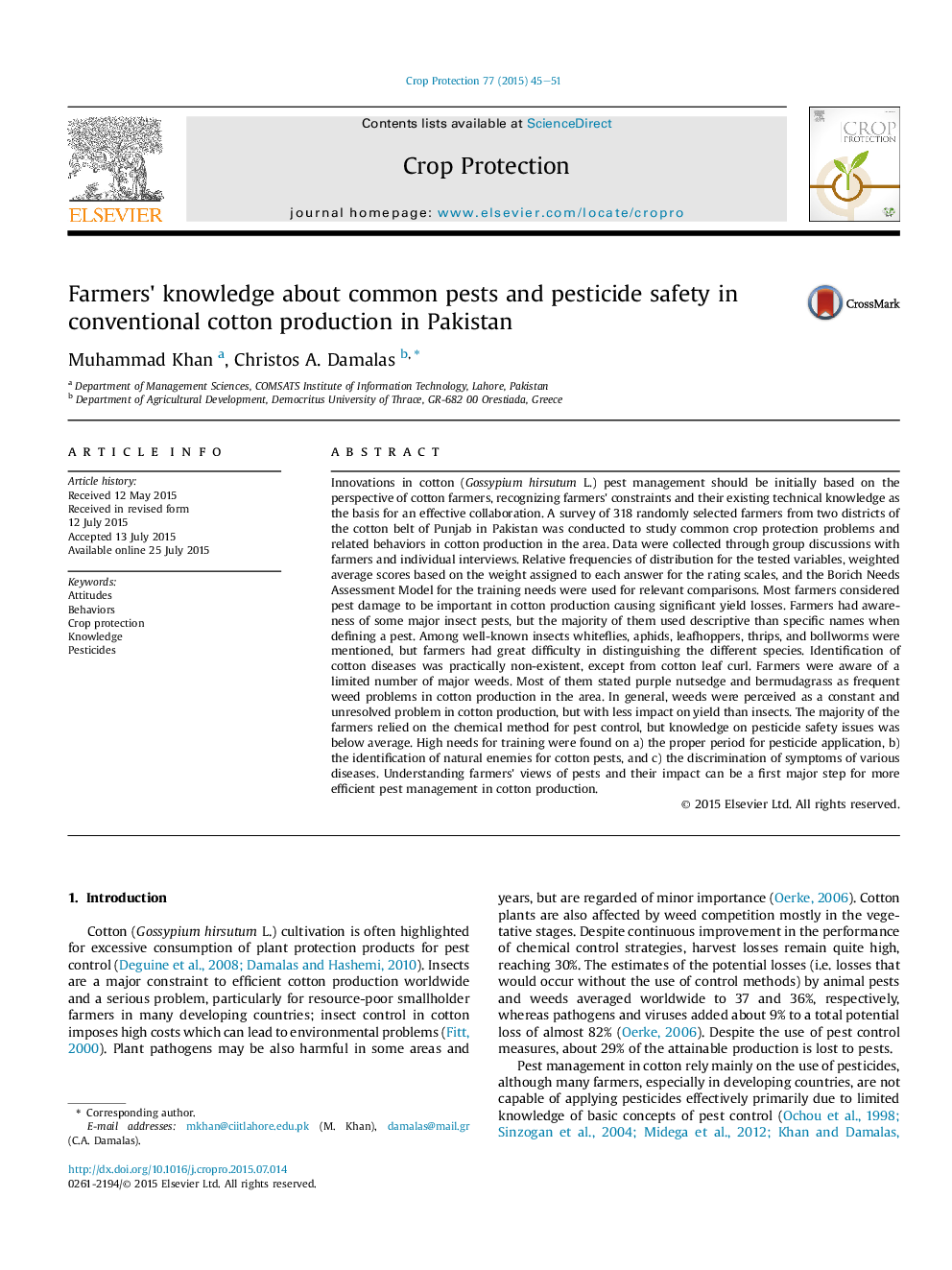| کد مقاله | کد نشریه | سال انتشار | مقاله انگلیسی | نسخه تمام متن |
|---|---|---|---|---|
| 4505640 | 1624310 | 2015 | 7 صفحه PDF | دانلود رایگان |
• We surveyed pest management constraints in conventional cotton in Punjab.
• Farmers had awareness of some insect pests with descriptive than specific names.
• Identification of cotton diseases was practically non-existent among farmers.
• Most farmers thought that the impact of weeds on cotton yield was moderate.
• Farmers' knowledge on pesticide safety issues was below average.
Innovations in cotton (Gossypium hirsutum L.) pest management should be initially based on the perspective of cotton farmers, recognizing farmers' constraints and their existing technical knowledge as the basis for an effective collaboration. A survey of 318 randomly selected farmers from two districts of the cotton belt of Punjab in Pakistan was conducted to study common crop protection problems and related behaviors in cotton production in the area. Data were collected through group discussions with farmers and individual interviews. Relative frequencies of distribution for the tested variables, weighted average scores based on the weight assigned to each answer for the rating scales, and the Borich Needs Assessment Model for the training needs were used for relevant comparisons. Most farmers considered pest damage to be important in cotton production causing significant yield losses. Farmers had awareness of some major insect pests, but the majority of them used descriptive than specific names when defining a pest. Among well-known insects whiteflies, aphids, leafhoppers, thrips, and bollworms were mentioned, but farmers had great difficulty in distinguishing the different species. Identification of cotton diseases was practically non-existent, except from cotton leaf curl. Farmers were aware of a limited number of major weeds. Most of them stated purple nutsedge and bermudagrass as frequent weed problems in cotton production in the area. In general, weeds were perceived as a constant and unresolved problem in cotton production, but with less impact on yield than insects. The majority of the farmers relied on the chemical method for pest control, but knowledge on pesticide safety issues was below average. High needs for training were found on a) the proper period for pesticide application, b) the identification of natural enemies for cotton pests, and c) the discrimination of symptoms of various diseases. Understanding farmers' views of pests and their impact can be a first major step for more efficient pest management in cotton production.
Journal: Crop Protection - Volume 77, November 2015, Pages 45–51
